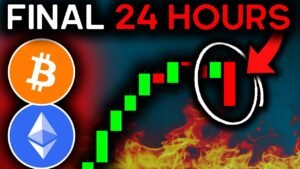The Current Landscape of the Crypto Market: An In-Depth Analysis
The cryptocurrency market has recently experienced a blend of optimism and volatility, as evidenced by a robust $286 million in inflows last week, according to CoinShares’ latest report. This marked the continuation of a seven-week streak that has contributed a total of $10.9 billion to crypto investment products. However, despite this encouraging influx, the overall assets under management have seen a decline, dropping from $187 billion to $177 billion. This paradox is heavily influenced by recent market fluctuations, which CoinShares’ Head of Research, James Butterfill, attributes to growing economic uncertainty in the US. Investors have been compelled to readjust their strategies in light of these shifting conditions, leading to what appears to be an increasingly complex market environment.
At the heart of this turbulence is a recent federal court ruling that has temporarily reinstated Trump-era reciprocal tariffs, stirring up volatility and causing investors to rethink their positions. While the US remains a stronghold for crypto investment with $199 million in inflows last week, other regions like Germany and Australia also showed significant activity, contributing $42.9 million and $21.5 million, respectively. Interestingly, Hong Kong witnessed a noteworthy surge, logging $54.8 million in new inflows—the highest since the launch of local crypto ETFs. On the contrary, Switzerland faced challenges, registering outflows totaling $32.8 million, with Sweden and Brazil following closely behind, marking weekly losses of $4 million and $3.2 million.
In a remarkable turn of events, Ethereum-based investment products became the star of the week, drawing the highest inflows across the digital asset market. According to the CoinShares report, Ethereum funds attracted $321 million, indicating a marked shift in investor sentiment and outpacing Bitcoin for the first time in months. This influx represents Ethereum’s sixth successive week of gains, amounting to a total of $1.19 billion over this period, the strongest showing since late 2024. Conversely, Bitcoin, which had enjoyed six weeks of steady inflows, experienced its first reversal with $8 million in outflows. Notably, BlackRock’s iShares Bitcoin Trust (IBIT) faced a significant setback, with a loss of $430.8 million, marking the trust’s largest outflow on record.
Such a significant pivot in the market dynamics underscores the impact of macroeconomic conditions on investor behavior. The shift toward Ethereum and away from Bitcoin began mid-week after the court’s tariff ruling, transforming a landscape of optimistic inflows into one dominated by cautious withdrawals. This realignment suggests a potential refocusing among investors, indicating their increased sensitivity to broader economic indicators and regulatory frameworks. Even XRP felt the pinch, with $28.2 million in outflows marking its second consecutive week of negative performance, bringing its two-week total to over $56 million.
Despite the challenges faced by major assets like Bitcoin and XRP, niche cryptocurrencies have shown resilience. Sui managed to attract $2.2 million, while Solana added $1.5 million, Cardano brought in $100,000, and Chainlink netted $800,000. These numbers indicate a shifting landscape where the spotlight is increasingly on Ethereum, showcasing its momentum, while Bitcoin may be taking a temporary backseat. The current scenario highlights the diverse investment strategies flowing through the crypto market, emphasizing the ongoing evolution as investors navigate uncertainty and opportunity in equal measure.
In summary, the latest developments in the cryptocurrency market reveal a dynamic interplay between inflows and outflows, heavily influenced by macroeconomic factors and investor sentiment. As the market continues to adapt to external pressures, the transition toward Ethereum reflects a changing tide that could redefine how digital assets are perceived and valued in the coming months. With a keen eye on regulatory decisions and market signals, investors will likely remain agile, actively seeking opportunities within a landscape characterized by both challenge and change.

















